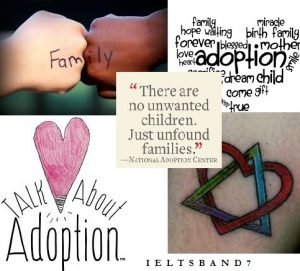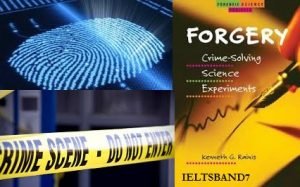IELTS Speaking Sample Answer # Adoption
Adoption is a process in which an individual or parents adopt or legally take another’s child and raise as their own. There are many adoption centers and so many children hoping to get adopted to a better lifestyle. Let us today have a look at some of the possible IELTS questions related to adoption that can be asked in IELTS speaking section.
How is adoption viewed in your country?
Adoption is a new term in our country. Too an extent, it is still a little difficult for the child to be known as the adopted child. But, I would say that with education and more job availability, people are starting to look adoption as a very natural process. There have even been parents who have raised their own children and then adopted others to provide them good lifestyle.
Do you know anyone who has been adopted?
There is no one in my extended family or friends who has ever been adopted or want to go for adoption. But, there is a family member of my friend who is adopting a girl to provide her education and share her lifestyle with her. I think it is a great thought of her and I hope she is able to give the girl child all that is required to lead a great life.
Can you think of any famous people who was adopted?
Yes surely. Steve Jobs was adopted and he turned out to be a great asset to the world. He even said in his autobiography that whatever little electronics he knew, it is because of his father. I remember reading, Nelson Mandela was an adopted child.
How does being adopted affect a child’s view of themselves?
I think it totally depends on how the society makes them feel about themselves. Even more, it is about the parents who have adopted them. If there is a friendly relation between the child and the parent, I think there is not much that society can affect because in the end the child can always clarify the doubts with their parent.
What are some of the reason people adopt children?
There could be many reasons for adopting children. It might be possible that they themselves were adopted and they want to give back what they got. Also, infertility is a common reason for people to adopt children. And then there are some amazing people who adopt because they don’t want to wait for their partners to arrive in their lives. There are so many single parents out there. And then there are so many other factors like may be they fall in love with a child or because they want to help community.
What are some of the reasons that people give children for adoption?
No matter what, it is really tough for a mother to give her child up for adoption. But, then there could be many reasons for it. There are times when parents don’t have the resource for giving a good lifestyle to their children. Even some people become single parent and they don’t want that, so they give their child up for adoption. Even a woman who becomes pregnant in her teen years might opt for adoption.
What do you think about the adoption system in your country?
The adoption system in my country is pretty good. There are areas that have been taken care of. Like, a single male cannot adopt a girl child. Also, if the parents have any life threatening disease, they cannot adopt a child. There should be some difference in the age of parent and the child. However, I think there should be more awareness about adoption to people. Because, it is when the term becomes familiar, people will start adopting children.
What do you think about couples that adopt children from different countries?
I think it is a great thing that they do but I am skeptical of whether they are able to raise their children in a very healthy environment. Because, a child knows that he/she does not belong there and they have been brought and settled there. But, if the parents are able to bring down the idea of oneness among the children, it is good thing. Because, a developed country can always provide better facilities than a underdeveloped one.
What qualities make a couple or a person qualified to adopt a child?
I think openness is one thing that is very important for a person to adopt a child. The parent has to be prepared for the day when the child comes home asking “Is he/she adopted?”. And all those questions that society will bring in their minds. Even more, patience is something very important as a parent of an adopted child.
Should the adoption process be more, or less, difficult than it is now?
I think it should be appropriate for the child. Making it more difficult would some how protect the child. But I think the main motive behind making the adoption process less or more difficult should be to ensure that first, the child gets adopted. Second, that the child gets adopted to a good family which can provide better future. And the most important thing is that the child gets the love, care and security required for a healthy life.
Should people be able to decide what type of children they want to adopt? For example: boy or girl, hair color, age, etc.
In my opinion, people should be able to decide at least the age of the child. Because, if that they are not able to decide, it would become quite difficult. Apart from that, I think the gender and the other characteristics should be kept hidden, the way in normal delivery. Because it allows that excitement we have when a new child is born and reduces the cases of gender inequality.




